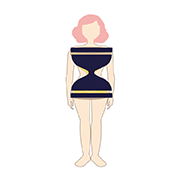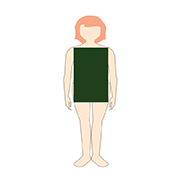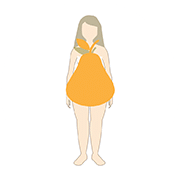Chafing is a common skin condition that can affect anyone of any size. However, the signs of chafing can look similar to many other skin conditions and can be confused with other skin issues. In this blog, we’ll answer the questions, what does chafing look like, and how can it be distinguished from other skin concerns?
What does a chafing rash look like?
The cause of chafing is prolonged friction or rubbing of the skin, which is exacerbated by heat and excess moisture and sweat. This friction makes skin sting or burn, and in most cases, it can cause a mild, red rash. Initially, chafing will make skin pink and feel hot or sting; as the chafing heals, it may begin to look like flaky, red spots. In severe cases, where chafing is prolonged, the rash may advance, and symptoms may expand to swelling, blistering, bleeding, or crusting of the affected area.
Is it chafing or something else?
Chafing rashes can present with similar symptoms as other skin conditions. And that makes chafing rash symptoms easy to confuse with other common skin conditions. Many skin conditions may be present along with chafing, because they often have similar causes, or become exacerbated by adding skin chafing.
Additionally, many skin conditions are brought on by excessive heat — which is also a significant cause of chafing.
Chafing may look like or be present alongside the following skin conditions:
- Friction burn
- 1st-degree burns
- Eczema
- Sunburn
- Stretch marks
- Skin discoloration
- Heat rash
- Body acne
- Razor burn
- Herpes
- Hives
Many of these skin conditions may become present after excessive heat, sweat, or weight fluctuations such as weight gain, or weight loss.
Signs your rash is chafing:
Chafing rash is far more likely to appear in particular areas of the body. You’re more likely to develop chafing on the body parts where skin rubs against skin or your clothing. Therefore, chafing is most common on the inner thighs and buttocks, the groin area, or around the underarms.
Eczema on the inner thighs can easily be confused with chafing, and both men and women are susceptible to inner thigh rashes. Eczema or Atopic Dermatitis is a common skin condition that causes red, itchy, and dry skin. While these are similar symptoms to chafing, it is unusual for eczema to only present in one body area.
Eczema may appear anywhere on your skin, but it’s typically found on the hands, feet, neck, inner elbows, and around the eyes. If you’re only experiencing a rash around a friction area like the inner thighs, it’s likely to be chafing.
Signs your rash is not chafing:
When diagnosing a rash, you may see symptoms that likely rule out chafing as the cause of your irritation.
Bumps, lumps, and welts
Several common skin conditions present with boils, pimples, blisters, or welts. These symptoms may be present in body acne, herpes, hives, shaving rash, ingrown hairs, or heat rash.
A rash may develop blisters in cases of serious chafing, but this will only happen if continuous friction occurs in the affected area. It is not typical for chafing to present initially with bumps or blisters.
Chafing or inflamed ingrown hairs can present side by side, as both can be caused by friction. However, if you only have isolated bumps and inflamed hair follicles and no other rash, you likely only have ingrown hairs and not chafing.
Medication or allergy rashes
If a rash develops after taking a new medication, it may not be chafing. Instead, this rash may be hives caused by an allergic reaction. Likewise, if a rash develops after trying new food, it may also be an allergic reaction. These rashes can occur anywhere, but if they develop on areas with no skin-on-skin friction, such as the face, chest, or lower legs, then they are unlikely to be chafing. Therefore, you should speak to a medical professional if you develop a medication or allergy rash.
Stress
If a rash comes on quickly during a time of stress, it is most likely hives from stress or anxiety. These rashes can appear anywhere on your body and will look like red, pink, raised, or puffy splotches.
Conclusion
It’s important not to misdiagnose serious skin conditions and take appropriate prevention measures or seek treatment as needed. If you don’t know what chafing looks like and suspect you may have another skin condition, you should seek medical attention to get a professional diagnosis.
Bandelettes thigh bands free men and women from the pain of skin chafing. To learn more about the causes and prevention of skin chafing, read our guide: Everything You Need To Know About Chafing.









